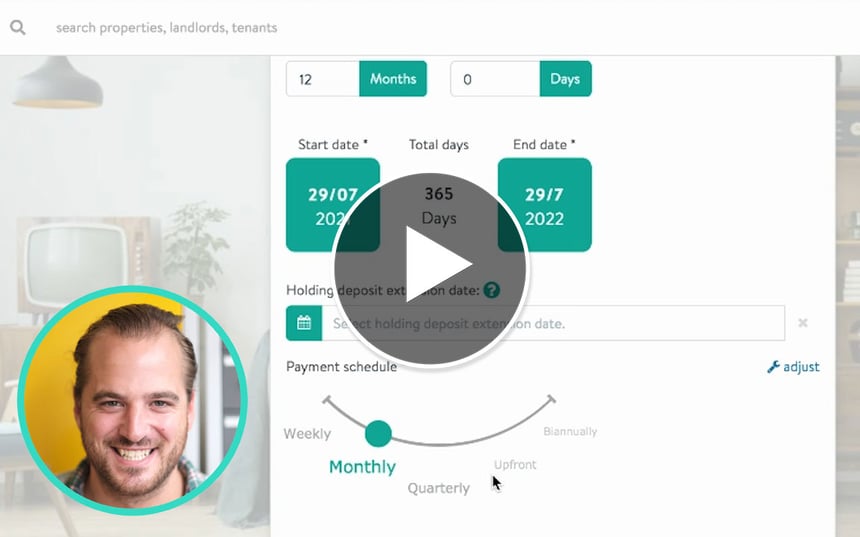New technology and adapting to change
Change is a constant in the world we live in today and requires us to adapt to new situations, changing requirements and evolving customer demands.
Change is a constant in the world we live in today and requires us to adapt to new situations, changing requirements and evolving customer demands. As change becomes increasingly unavoidable within the lettings industry, how do we adapt to and conquer these changes in the easiest way possible?.
"Our dilemma is that we hate change and love it at the same time; what we really want is for things to remain the same but get better."
Sydney J. Harris
Change is a constant in the world we live in today and requires us to adapt to new situations, changing requirements and evolving customer demands. As change becomes increasingly unavoidable within the lettings industry, how do we adapt to and conquer these changes in the easiest way possible?
Technology is often seen as a great resource to help tackle change. Companies use and implement new technologies and platforms within their organisations to not only match the needs of their customers but also to be at the forefront of leading the charge in their respective industry. This couldn’t be more important in the lettings industry than now with new legislation, increasing operational costs and the needs of their customers rapidly changing.
If you need an example of technology capitalising on an opportunity, look no further than email. Technological giants such as Google have contributed to the wide displacement of letter writing, forcing postal services and greeting card companies to shift and accommodate to the digital world and its ever growing number of users.
Change is not meant to be easy, and not only progressive companies who should be doing it. Inevitably a change in the technology you use in your business will require time and a shift in the users’ mindsets. So how do you as a business ensure a smooth and successful transition in getting the most out of the new product you have invested in, while simultaneously helping the internal change management process within your organisation?
Change management
The change management process may begin before your launch date, but it continues through the adoption stage and beyond. With the help of Goodlord customer Andy Dixon from agency, James Neave, we’d like to share our recommendations to best manage the change and adoption of new technologies and processes.
There are three steps to ensuring successful change management: introduction, implementation and adoption.
1. Introduction
Proactively communicating to your team from the outset about your plans to implement a new product will help alleviate the initial concerns of those directly impacted. Additionally, it is important to involve those affected in the decision as much as possible. After smoothly completing his Goodlord implementation, Andy Dixon stated,
“It’s very important to include your team in the decision as it will help you obtain buy in and make everyone feel valued and important. Trust me, it’ll make the whole process easier in the long run.”
Introducing a new product within your team will inevitably prompt questions and concern from those directly impacted. Questions such as “how will this affect my day to day responsibilities?” or “is this replacing my job?” are completely normal.
Lastly, be sure to take this opportunity to highlight the strategic benefits and core goals of implementing this new product. After hundreds of completed implementations, we find that when employees understand why the decision has been made and what the benefits to the business will be in the long term, they are much more likely to adopt….and far more quickly.
2. Implementation
Managing change throughout the implementation process and ensuring internal communication is consistently clear will help encourage early adopters, and give you extra time to answer any questions that may arise.
It is important to set clear expectations regarding what to expect from the onboarding process and the responsibilities of each person involved to ensure key stakeholders are aware of the impact of missed deadlines and training calls.
Additionally, ensure that the correct people are involved during the right steps of the implementation process. Don’t know who they are? Ask! Remember, the people behind the software you are adopting have implemented countless other companies before and can help guide you through a successful and pain free onboarding process. Once you have the right people involved, ensure you give them enough time during the implementation to feel comfortable with the system by providing adequate training and time for questions. If you have an early adopter, offer them extra responsibilities such as coaching employees and providing extra assistance when you are unable to.
Andy found that rolling out the technology to a small trial group was extremely successful, stating that this “ensures that everyone has time to answer questions and adapt at a smaller scale. Once everyone is comfortable, then it is officially time for a full roll out.”
3. Adoption
You’re up and running - exciting! Don’t stop here, keep an open communication loop amongst the team members who are affected day to day. You can then address any concerns and make sure that the platform works for your business and employees.
You and your colleagues have worked hard to adapt to a new process and software, so ensure that everyone remains motivated and gets to see the benefit from the payoff of their dedication to the business.
Andy emphasises the need to “continue to encourage everyone to remain diligent to the new process. Highlight the great work of the employees that are, and be sure to demonstrate the contribution to the business.”
I work on the Implementation team here at Goodlord. Our job is to make implementation of the platform as easy as possible, leaving you with a long term solution with maximum benefits.
Below are three things that I have learned in working with customers adopting a new technology platform:
- Communication - keeping your team in the loop before, during and after the implementation
- Engagement in training - ask as many questions as you can, there is never a bad question!
- Encourage your team to watch and read through any training material that is sent over to you as soon as possible
We are also responsible for training all users of the platform, ensuring they are confident and fully equipped with the knowledge they need to succeed. Find out how Goodlord can help your agency and hopefully speak to you soon!









